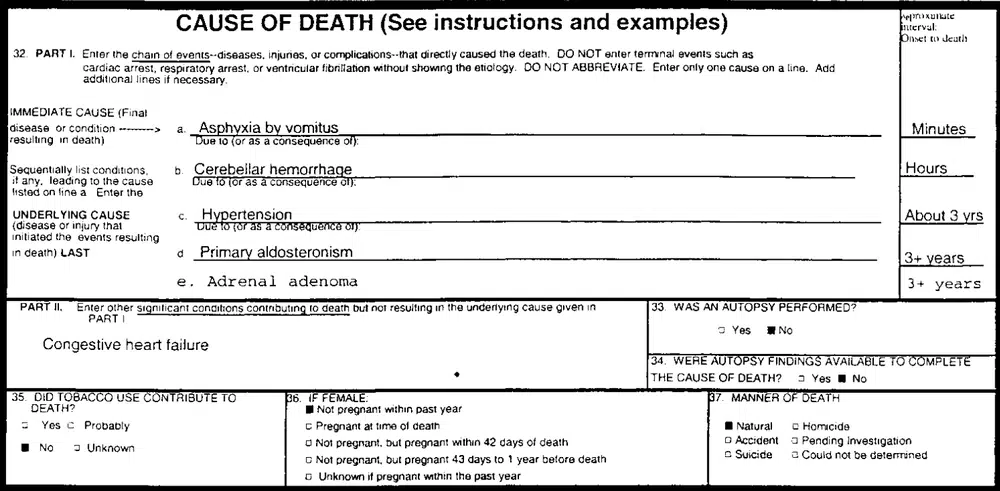The number of COVID-19 deaths in the US since the pandemic began topped 700,000 in October. This makes the virus the nation’s third leading cause of death behind heart disease and cancer.
Those numbers are preliminary, and the official data will not be complete until at least a year after the government officially ends the public health emergency for the pandemic. With both the provisional and official data tracking causes of death, the Centers for Disease Control and Prevention (CDC) requires anyone certifying death information to follow international standards from the World Health Organization.
When an individual dies, there’s often multiple contributing conditions or factors. Those can create challenges for tracking the cause of death in government data.
The CDC is the primary federal agency tracking causes of death nationwide. It maintains the National Vital Statistics System, which gathers death information from every state.
States get their information from physicians, medical examiners, or coroners who report causes of death and conditions contributing to death on death certificates.
Each certificate has two sections for listing conditions. The first section requires the certifier to outline the chain of events — diseases, injuries, and other health complications — that directly caused death. There may be multiple steps listed in the section, but it always ends with the “underlying cause of death,” or the cause that starts the chain.

A sample death certificate provided by the CDC.
According to CDC guidelines:
A cause of death is the morbid condition or disease process, abnormality, injury, or poisoning leading directly or indirectly to death. The underlying cause of death is the disease or injury which initiated the train of morbid events leading directly or indirectly to death or the circumstances of the accident or violence which produced the fatal injury. A death often results from the combined effect of two or more conditions. These conditions may be completely unrelated, arising independently of each other or they may be causally related to each other, that is, one cause may lead to another which in turn leads to a third cause, etc.
The second section of the death certificate lists significant conditions that contributed to a death but not necessarily causing the death. For example, conditions like obesity and hypertension are not considered causes of death but may contribute or worsen the effects of the eventual cause.
How are deaths included in COVID-19 statistics?
Every person who dies with a confirmed or suspected COVID-19 case does not always have COVID-19 listed as a cause of death on their death certificate. The CDC issued guidelines in April 2020 about how to address COVID-19 in death certificates; as with all medical conditions and injuries, medical examiners, etc., should not cite coronavirus as a cause of death unless it was part of a chain of conditions that led to death.
For example, if an individual dies in a car crash and is confirmed to have COVID-19 at the time, their death certificate would not include the virus as a cause of death unless the medical examiner determined it as the underlying cause of the crash.
In many cases, the virus can lead to life-threatening conditions like pneumonia or acute respiratory distress syndrome, according to the CDC. As a result, coronavirus is expected to be listed as the underlying cause of death in those cases.
The CDC also tracks the conditions that contribute to COVID-19 deaths. Out of 708,000 COVID-19 deaths certificates between January 1, 2020 and October 9, 2021, 48% cited the flu or pneumonia, 39% cited respiratory failures, 39% cited hypertension, and 16% cited diabetes.
The CDC is using the same standards for coronavirus death statistics as it does for other conditions it tracks. Official 2020 death statistics will likely be released late this year, while 2021 data will be finalized by late 2022. The official number of deaths from COVID-19 won’t be known for years. As a result, the daily data tracking deaths caused by COVID-19 will continue to serve as a key metric in assessing the state of the pandemic.
Keep track of the latest COVID-19 statistics at the national, state, and county levels.







